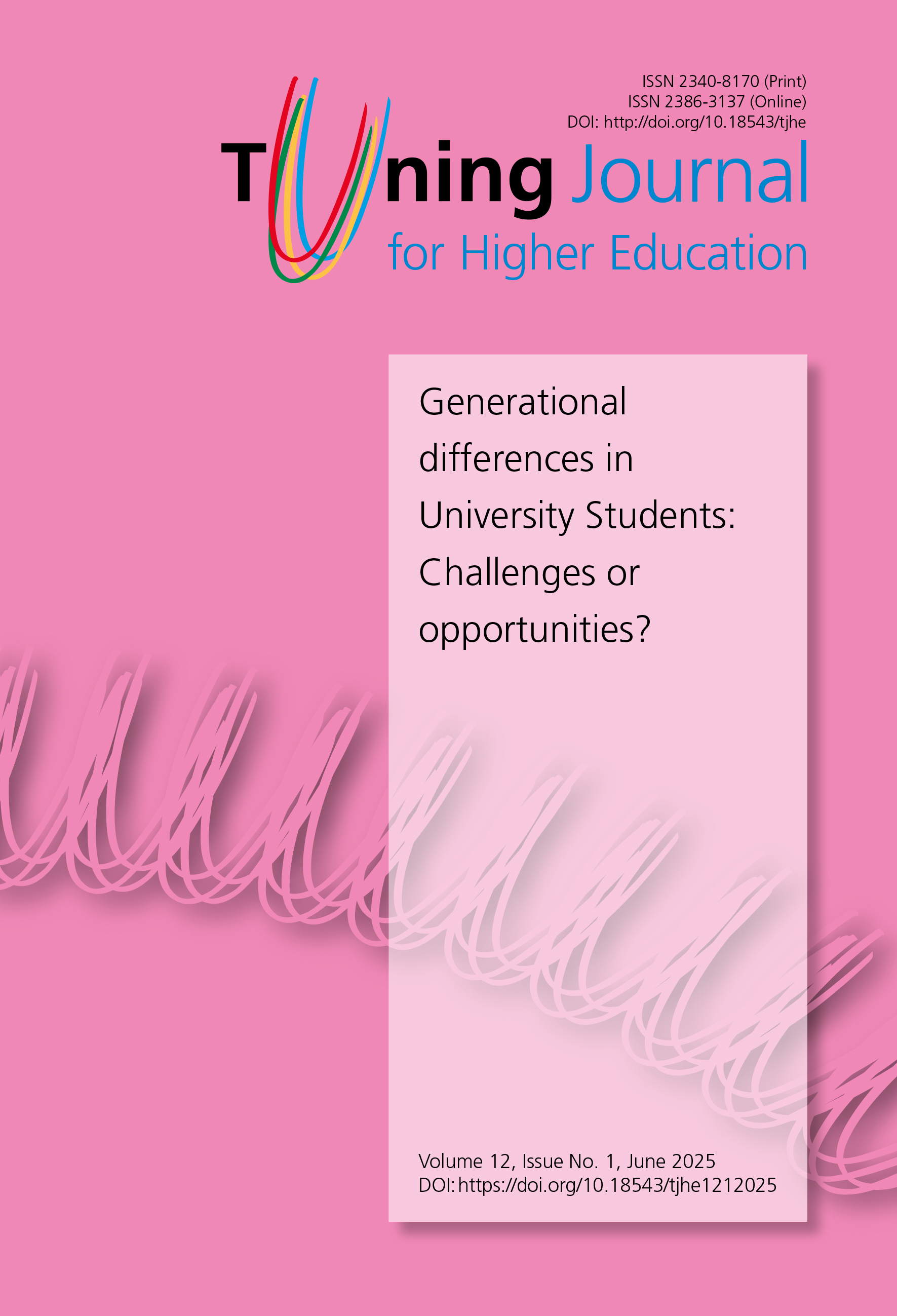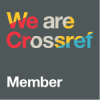Understanding of Algebra of secondary school mathematics teachers from different generations: A qualitative comparative analysis of the answers
Abstract
When the challenges faced in the transition period from arithmetic to algebra are considered, it is important to research the differences between secondary school mathematics teachers from Generations X and Y, and their awareness levels. This study aims to compare the algebraic operation skills of mathematics teachers from Generations X and Y and their awareness levels. The content was analyzed in the study that was designed as a case study. The study participants were 118 secondary school mathematics teachers, 53 teachers from Generation X, and 65 teachers from Generation Y. The findings were evaluated under algebraic skills and algebraic awareness topics. The study results revealed that secondary school mathematics teachers from Generation Y had higher mean scores than teachers from Generation X in terms of the difference between the variable and unknown, algebraic operations, quantification, algebra and patterns, quantification, and inequality subjects in the algebra learning field.
Received: 16 January 2023
Accepted: 24 October 2024
Downloads
References
Adamu, Abebaw Yirga. 2021. “Harmonisation of Higher Education in Africa: 20 Years After the Bologna Process.” Tuning Journal for Higher Education, 9. no.1: 103-126.
Altuntuğ, Nevriye. 2012. “The Consumption Phenomenon from Generation to Generation and The Consumer Profile of Future.” Journal of Organization and Management Sciences, 4, no.1: 203-212. https://dergipark.org.tr/tr/download/article-file/151016.
Apsari, Ratih Ayu, Ratu Ilma Indra Putri, Sariyasa, Mieke Abels, and Sudi Prayitno. 2020. “Geometry Representation to Develop Algebraic Thinking: A Recommendation for A Pattern Investigation in Pre-Algebra Class.” Journal on Mathematics Education, 11, no.1: 45-58. https://doi.org/10.22342/jme.11.1.9535.45-58.
Barbieri, Christina A., Dana Miller-Cotto, and Julie L. Booth 2019. “Lessening The Load of Misconceptions: Design-Based Principles for Algebra Learning.” Journal of the Learning Sciences, 28, no. 3: 381-417. https://doi.org/10.1080/10508406.2019.1573428.
Blanton, Maria L. 2008. Algebra and the Elementary Classroom: Transforming Thinking, Transforming Practice. Heinemann.
Blanton, Maria, Bárbara M. Brizuela, Angela Murphy Gardiner, Katie Sawrey and Ashley Newman-Owens. 2017. “A Progression in First-Grade Children’s Thinking about Variable and Variable Notation in Functional Relationships.” Educational Studies in Mathematics, 95 no. 2: 181-202. https://doi.org/10.1007/s10649-016-9745-0.
Blanton Maria., Bárbaras M. Brizuela, Ana Stephens et al. 2018. “Implementing a Framework for Early Algebra.” In Teaching and Learning Algebraic Thinking With 5- To 12-Year-Olds: The Global Evolution of An Emerging Field of Research and Practice, edited by C. Kieran. Springer International Publishing, 27-49.
Booth, Julie. L., and Kenneth R. Koedinger. 2008. “Key misconceptions in algebraic problem solving,” In Proceedings of the 30th Annual Cognitive Science Society, edited by B. C. Love, McRae K., and Sloutsky V. M.. 571-576.
Bova, Breda, and Michael Kroth. 2001. “Workplace Learning and Generation X.” Journal of Workplace Learning, 13, no. 2: 57-65. https://doi.org/10.1108/13665620110383645.
Büyüköztürk, Şener, Ebru Kılıç Çakmak, Özcan Erkan Akgün, Şirin Karadeniz, and Funda Demirel. 2016. Bilimsel Araştırma Yöntemleri [Scientific Research Methods]. (20th ed.). Pegem Akademi.
Capraro, Mary Margare, and Heather Joffrion. 2006. “Algebraic Equations: Can Middle-School Students Meaningfully Translate from Words to Mathematical Symbols?” Reading Psychology, 27, no. 2-3: 147-164. https://doi.org/10.1080/02702710600642467.
Carpenter, Thomas. P., Megan Loef Franke, and Linda Levi. 2003. Thinking Mathematically: Integrating Arithmetic and Algebra in Elementary School Heinemann.
Clements, Douglas H., and Julie Sarama. (2004). “Learning Trajectories in Mathematics Education.” Mathematical Thinking and Learning, 6, no. 2, 81-89. https://doi.org/10.1207/s15327833mtl0602_1.
Crampton, Suzanne M., and John W. Hodge, 2006. “The Supervisor and Generational Differences.” Proceedings of the Academy of Organizational Culture, Communications and Conflict, 11, no. 1: 19-22.
Dekker, Truus, and Maarten Dolk. 2011. “From Arithmetic to Algebra.” In, Secondary algebra education: Revisiting topic and themes and exploring the unknowns, edited by P. Drijvers. Sense Publishers.
Drews, D. (2008). Errors Analysis: Teaching Developmentally. Wadsworth Thompson Learning.
Drijvers, Paul, Aad Goddijn, and Martin Kindt. 2011. “Algebra Education: Exploring Topics and Themes.” In Secondary algebra education: Revisiting topics and themes and exploring the unknown, edited by in P. Drijvers. Sense. 5-26.
Ely, Robert, and Anne E. Adams. 2012. “Unknown, Placeholder, or Variable: What Is X?” Mathematics Education Research Journal, 24, no. 1: 19-38. https://doi.org/10.1007/s13394-011-0029-9.
Ferryansyah, E., S. Widyawati, and W. Rahayu. 2018. “The Analysis of Students’ Difficulty in Learning Linear Algebra.” Journal of Physics: Conference Series, 1028, no. 1: 012152. https://doi.org/10.1088/1742-6596/1028/1/012152.
Gamoran, Adam, and Eileen C. Hannigan. 2000. “Algebra for Everyone? Benefits of College-Preparatory Mathematics for Students with Diverse Abilities in Early Secondary School.” Educational Evaluation and Policy Analysis, 22, no. 3: 241- 254. https://doi.org/10.3102/01623737022003241.
Genareo, Vincent R., Anne Foegen, Barbara J. Dougherty, Wiliam W. DeLeeuw, Jeannette Olson, and Ruveyda Karaman-Dundar. 2020. “Technical Adequacy of Procedural and Conceptual Algebra Screening Measures in High School Algebra.” Assessment for Effective Intervention, 46, no. 2:121-131. https://doi.org/10.1177/1534508419862025.
Glass, Amy. 2007. “Understanding Generational Differences for Competitive Success.” Industrial and Commercial Training, 39, no. 1: 98-103. https://doi.org/10.1108/00197850710732424.
Güler, Gürsel. 2016. “The Difficulties Experienced in Teaching Proof to Prospective Mathematics Teachers: Academician Views.” Higher Education Studies, 6, no. 1: 145-158. https://doi.org/10.5539/hes.v6n1p145.
Hendroanto, Aan, Frans van Galen, D. van Eerde, R. C. I. Prahmana, F. Setyawan, and A..Istiandaru, 2018. “Photography Activities for Developing Students’ Spatial Orientation and Spatial Visualization.” Journal of Physics: Conference Series, 943, no. 1: 012029. https://doi.org/10.1088/1742-6596/943/1/012029.
Herriott, Scot. R., and Steven R. Dunbar. 2009. “Who Takes College Algebra?” Primus: Problems, Resources, and Issues in Mathematics Undergraduate Studies, 19, no. 1: 74-87. https://doi.org/10.1080/10511970701573441.
Irawati, Zubainur C. M. and Ali, R. M. 2018. “Cognitive Conflict Strategy to Minimize Students’ Misconception on the Topic of Addition of Algebraic Expression.” In J. Phys. Conf. Ser.: Vol. 1088.
Jupri, Al, Paul Drijvers, and Marja van den Heuvel-Panhuizen. 2014. “Difficulties in Initial Algebra Learning in Indonesia.” Mathematics Education Research Group of Australasia Journal, 26, no. 4: 683-710. https://doi.org/10.1007/s13394-013-0097-0.
Kaput, James. J., Maria L. Blanton, and Luis Moreno. 2008. “Algebra from a Symbolization Point of View.” In Algebra in the Early Grades, edited by Kaput, James. J.,. Carraher D. W. and Blanton M. L. Lawrence Erlbaum. 19-55.
Kaput James. J., David. W. Carraher, and Maria L. Blanton. 2008. Algebra in the early grades, (Lawrence Erlbaum Associates/National Council of Teachers of Mathematics, 2008).
Kassel, Amy. 2020. “Review of How Students Think When Doing Algebra.” Education Review, 27, no. 1: 1-5. https://doi.org/10.14507/er.v27.2789.
Kieran, Carolyn. 2014. “Algebra Teaching and Learning.” In Encyclopedia of mathematics education, edited by Lerman S. Springer.
Kieran, Carolyn. 2004. “Algebraic Thinking in the Early Grades: What is it?” The Mathematics Educator, 8, no. 1: 139-151.
Kieran, Carolyn. 2018. “Seeking, using, and expressing structure in numbers and numerical operations: A fundamental path to developing early algebraic thinking” In Teaching and learning algebraic thinking with 5-to 12-year-olds. Springer, Cham. 79-105.
Knuth, Eric J., Ana C. Stephens, Nicole M. McNeil, and Martha W. Alibali. 2006. “Does Understanding the Equal Sign Matter? Evidence from Solving Equations.” Journal for Research in Mathematics Education, 37, no. 4: 297-312. https://doi.org/10.2307/30034852.
Lee, Kerry, Swee Fong Ng, and Rebecca Bull. 2018. “Learning and Solving Algebra Word Problems: The Roles of Relational Skills, Arithmetic, and Executive Functioning.” Developmental Psychology, 54, no. 9: 1758-1772. https://doi.org/10.1037/dev0000561.
Litke, Erica. 2020. “Instructional Practice in Algebra: Building from Existing Practices to Inform an Incremental Improvement Approach.” Teaching and Teacher Education, 91, no. 2020: 103030. https://doi.org/10.1016/j.tate.2020.103030.
Malara, N. A., and G. Navarra. 2012. “Promoting an Early Approach to The Algebraic Thought in Primary and Middle School.” Consultado, 28, no. 2012: 0572012.
Martin, Carolyn A. 2005. “From High Maintenance to High Productivity. What Managers Need to Know About Generation Y.” Industrial and Commercial Training, 37, no. 1: 39-44. https://doi.org/10.1108/00197850510699965.
Miles, Matthew, B., and A. Michael Huberman. 1994. Qualitative Data Analysis: An expanded Sourcebook. (2nd ed). Sage.
Moss, Diana L., and Teruni Lamberg. 2019. “Conceptions of Expressions and Equations in Early Algebra: A Learning Trajectory.” International Journal for Mathematics Teaching and Learning, 20, no. 2: 170-192.
Murray, M. K. 2010. “Early Algebra and Mathematics Specialists.” Journal of Mathematics and Science: Collaborative Explorations, 12, no. 1: 73-81. https://doi.org/10.25891/S019-KF79.
Müller, Thaísa Jacintho, Helena Noronha Cury, and José Valdeni De Lima. 2014. “A Discussion about Errors in Algebra for Creation of Learning Object.” International Journal of Contemporary Educational Research, 1. no. 1: 42-50. http://ijcer.net/tr/issue/16050/167832.
Nasution, F. Y. 2019. “Misconception’s Analysis of Students Junior High School in Solving Algebra Problems Term of Field Independent and Field Dependent Cognitive Styles.” In Proceedings of the international conference on mathematical analysis, its applications and learning 2018 (Sanata Dharma University Press, 2019, March), 1-6. https://usd.ac.id/conference/icomaal/wp-content/uploads/2019/03/783-001.pdf.
Özmutlu, Emel Bayrak. 2022. “Views of pre-service teachers on the research-based teacher education approach.” Tuning Journal for Higher Education, 10, no.1: 113-153.
Russell, Michael, Laura M. O’Dwyer, and Helena Miranda. 2009. “Diagnosing Students’ Misconceptions in Algebra: Results from an Experimental Pilot Study.” Behavior Research Methods, 41, no. 2: 414-424. https://doi.org/10.3758/BRM.41.2.414.
Schunk, Dale H. 2008. “Cognitive Information Processing.” In Learning theories: An Educational Perspective (5th ed.). Pearson.
Stagylidou, Stamatia, and Stella Vosniadou. 2004. “The Development of Students’ Understanding of the Numerical Value of Fractions.” Learning and Instruction, 14, no. 1: 503–518. https://doi.org/10.1016/j.learninstruc.2004.06.015.
Tolbize, Anick. 2008. “Generational Differences in the Workplace,” Research and Training Center on Community Living, 5, no. 2:1-21.
Üstün, Merve, and Ali Taş. 2021. “Motivation Types and Tools That X and Y Generation Teachers Uses.” Kırıkkale University Journal of Social Sciences, 11, no. 1: 251-267. https://dergipark.org.tr/tr/download/article-file/1298727.
Yıldırım, Ali and Hasan Şimşek. 2016. Sosyal Bilimlerde Nitel Araştırma Yöntemleri [Qualitative Research Methods in Social Sciences] (10th ed.) Seçkin Publication.
Copyright (c) 2025 University of Deusto

This work is licensed under a Creative Commons Attribution-NonCommercial 4.0 International License.
Authors are required to sign and submit a copyright transfer agreement after acceptance but before publication of their manuscript. To that effect, they receive, from the Managing Editor of Tuning Journal for Higher Education, a standard copyright assignment form designed along the following lines:
1. Authorship:
The author who signs the copyright transfer agreement must be the sole creator of the work or legally acting on behalf of and with the full agreement of all the contributing authors.
2. Copyright and Code of conduct:
a) Authors warrant that their work is original; has not been previously copyrighted or published in any form; is not under consideration for publication elsewhere; its submission and publication do not violate TJHE Ethical Guidelines for Publication and any codes (of conduct), privacy and confidentiality agreements, laws or any rights of any third party; and no publication payment by the Publisher (University of Deusto) is required.
b) Authors are solely liable for the consequences that may arise from third parties’ complaints about the submitted manuscript and its publication in Tuning Journal for Higher Education (TJHE).
c) Authors grant to the Publisher the worldwide, sub-licensable, and royalty-free right to exploit the work in all forms and media of expression, now known or developed in the future, for educational and scholarly purposes.
d) Authors retain the right to archive, present, display, distribute, develop, and republish their work (publisher's version) to progress their scientific career provided the original publication source (Tuning Journal) is acknowledged properly and in a way that does not suggest the Publisher endorses them or their use of the wortk.
e) Authors warrant that no permissions or licences of any kind will be granted that might infringe the rights granted to the Publisher.
3. Users:
Tuning Journal for Higher Education is an Open Access publication. Its content is free for full and immediate access, reading, search, download, distribution and reuse in any medium or format only for non-commercial purposes and in compliance with any applicable copyright legislation, without prior permission from the Publisher or the author(s). In any case, proper acknowledgement of the original publication source must be made and any changes to the original work must be indicated clearly and in a manner that does not suggest the author’s and or Publisher’s endorsement whatsoever. Any other use of its content in any medium or format, now known or developed in the future, requires prior written permission of the copyright holder.


1.jpg)
1.jpg)
.jpg)
1.jpg)
.jpg)
.jpg)









